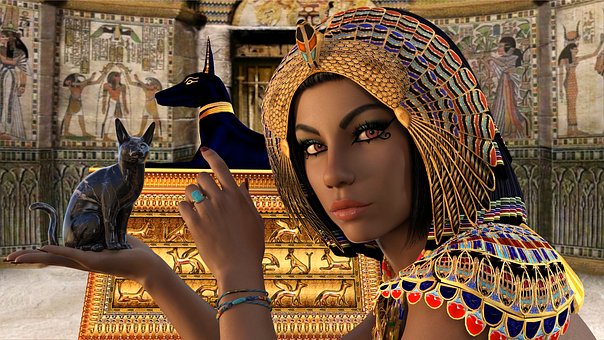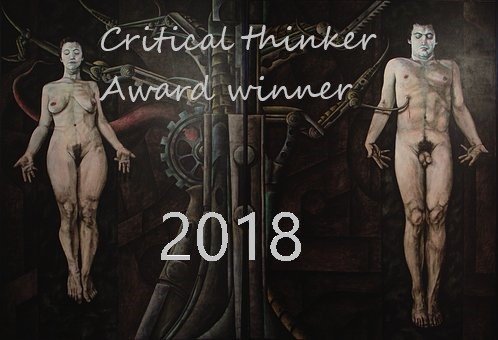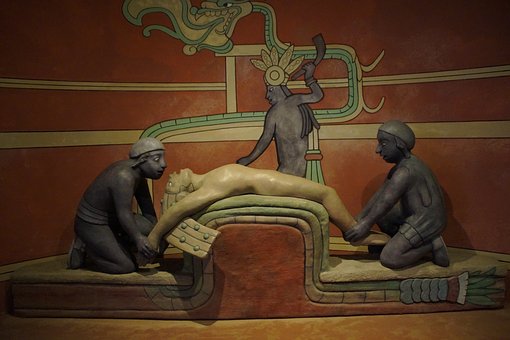Mysteries of the east! pt1.
The Eleusinian Mysteries. Cults and sacrifice?

I was researching with regards to pyramids and managed to get sidetracked as per usual.
And thought this would be a great future post, though then it may never get written, so the time is now.
It is not just pyramids I was researching per say, it was occultism, symbolism & rituals also - with regards to the days gone by. With this in mind this post may well be a future reference point for me and for you.

Era of the gods.
We are taking a trip back to BC (before Christ) - around 650 years BC to be a little more precise. The location is the great old country of Greece. I will be using source material as it is researched and not just a matter of my own opinion, with this in mind let us begin the journey.
Some background info.
Eleusinian Mysteries, most famous of the secret religious rites of ancient Greece. According to the myth told in the Homeric Hymn to Demeter, the earth goddess Demeter (q.v.) went to Eleusis in search of her daughter Kore (Persephone), who had been abducted by Hades (Pluto), god of the underworld. Befriended by the royal family of Eleusis, she agreed to rear the queen’s son. She was, however, prevented by the queen’s unknowing interference from making the boy immortal and eternally young. After this occasion, she revealed her identity to the royal family and commanded that a temple be built for her into which she retired.
According to the Hymn to Demeter, the Mysteries at Eleusis originated in the two-fold story of Demeter’s life—her separation from and reunion with her daughter and her failure to make the queen’s son immortal. After Eleusis was incorporated, the city of Athens took responsibility for the festival, but the festival never lost its local associations.
The Mysteries began with the march of the mystai (initiates) in solemn procession from Athens to Eleusis. The rites that they then performed in the Telesterion, or Hall of Initiation, were and remain a secret. Something was recited, something was revealed, and acts were performed, but there is no sure evidence of what the rites actually were, though some garbled information was given by later, Christian writers who tried to condemn the Mysteries as pagan abominations. It is clear, however, that neophytes were initiated in stages and that the annual process began with purification rites at what were called the Lesser Mysteries held at Agrai (Agrae) on the stream of Ilissos, outside of Athens, in the month of Anthesterion (February–March). The Greater Mysteries at Eleusis was celebrated annually in the month of Boedromion (September–October). It included a ritual bath in the sea, three days of fasting, and completion of the still-mysterious central rite. These acts completed the initiation, and the initiate was promised benefits of some kind in the afterlife.
Okay we have a background, now let us find the rituals.
The ritual behaviour of Initiates within the Eleusinian Mysteries offer some clues to their mystical experiences.
Almost subconsciously, the Initiates acted out the experiences of Demeter and Persephone contained within religious myth.
Living within pre-electric, primarily agricultural communites, the people rose with the sun and slept when night fell.
The Mysteries changed the pattern with the most important ceremonies beginning at nightfall - initially under a full moon and then - over a week - under progressively dark circumstances, illuminated by torchlight.
During the initial days of the ritual, the initiates walked fifteen miles back and forth from Athens to
Eleusis.
Even those who rode in carriages would have a long ,difficult journey - The Initiates would fast and sacrifice during the day and enthuse within majestic dances all night.
During the Night of Initiation, the Mystai would be placed within an experience of barely controlled terror, running in panic, Then at the sound of a gong....
visions, apparitions, joy...
All well and good, though I am trying to link rituals to living sacrifice, animal or human - Pagan style.
So I continued my research then stumbled on this, here we go.
The Eleusinian Mysteries were a set of traditions that existed for around 2,000 years, finally dying out sometime around AD 500. At the centre of the cult practising them was Persephone, kidnapped by Hades and forced to spend a few months each year with him in the Underworld and the rest with her mother—the ancient Greek explanation for winter.
The only requirements for entry into the cult were the ability to speak Greek and having never committed a murder. Aside from that, anyone—even women and slaves—were accepted, and an initiation ceremony kicked off a person’s access to the cult’s secret knowledge. Much of that knowledge has been lost, but we do know what the initiation ceremony entailed.
The mass initiation in Athens started on the 15th day of what’s now September. The day after the first gathering, the prospective initiates (and their animal sacrifices) were sent to the ocean to purify themselves. (This didn’t always end uneventfully, as in 339 BC, one was attacked and killed by a shark.) After a three-day rest, the assembled procession left on a 24-kilometer (15 mile) journey, replete with things like singing, music, and calling on Iacchus (who was associated with Dionysus) to usher in the night.
The next day began with sacrificial bulls being lifted by initiates and carried to sacrifice. Over the next few days, initiates were washed and taken into the final ceremonies. The lower orders’ ceremony involved the acting out of the Persephone-Demeter myth. What went on in the higher levels of the order is a bit more of a mystery, but there are a number of clues, like writings that suggest that there was a lot of dancing and that at least a part of it was absolutely terrifying, possibly because people were drinking something mild-altering.
When the initiates reached the end of their long journey to Eleusis, they drank their share of a beverage called kykeon. What exactly the drink was is debated, but we know it was made from barley and pennyroyal, and it was likely a hallucinogenic. The barley would have been infested with the parasite ergot, and the drink would have caused effects similar to an LSD trip.
Still no sign of human sacrifice only animal.
I checked through all the reference books I have though to no avail. This last article suggests though does not prove female sacrifice, and is indeed a few excellent extracts taken from these books.
- Grimal, Pierre, Larousse World Mythology, Secaucus, New Jersey, Chartwell Books, 1965, p. 121
- Campbell, Joseph, The Mask of the God: Primitive Mythology, New York, Penquin Books, 1982
- Campbell, Joseph, The Mask of the God: Occidental Mythology, New York, Penquin Books, 1976
Within the Eleusinian Mysteries the role of Demeter is vitally important. She took her name from Mother Earth, as was among the generation of children born of Cronus and Rhea. Her name provides a link with the Indo-European deities that the Hellenes brought with them. Almost with certainty, the triad in the Sumerian system would have been represented by Inannaand Ereshigal with Dumuzi, or his counterpart, the king in whom his spirit was incarnate; while in the Classical Greek supposed the triad in the Eleusis mysteries was composed of Demeter (the mother-goddess Earth), Persephone (Queen of the Underworld), and the young king, their foster child, Triptolemos (once a local king), who is said to have brought Demeter’s gift of grain into the world, and as the foster-ling of Persephone, to now reign in the land of the dead.
Although Demeter was thought as the mother-goddess Earth she never was confused with Gaia, who was considered a cosmic element. Demeter’s providence was the cultivation of the soil, especially land producing corn. Thus legends concerning her proliferated among the futile plains, and the central ground for her myths were the plains of Eleusis, which were around Athens and Sicily, containing the granaries of the ancient world.
Together with Demeter and Persephone the also was a third deity, Zagreus, who figured in the mysteries of Eleusis. Initially Iacchus was the shout uttered by the faithful in the course of religious processions. Gradually the shout assumed a personality and adopted the task of leading the processions of initiates. Occasionally he was thought to be the son of Demeter, but at other times he was considered to be the reincarnation of Zagreus, a son of Persephone and Zeus.
In Iacchus, one see a shout, an inanimate object, assume life; and in Zagreus, one sees the dead regain life; both are the revelation of the Eleusian mysteries. This was as it should be since the central theme of the Eleusus mysteries centres on the abduction of Persephone into the Underworld by Hades. Only Demeter, and Hekate, a moon goddess, heard her daughter, Persephone, scream for help when the Earth opened permitting Hades to snatch her away. But when bereaved Demeter tried tracing her daughter’s footsteps she found them obliterated by those of a pig. As by coincidence at the time of the abduction a herd of pigs was rooting nearby. The swineherd’s name was Eubouleus, which means “the giver of good counsel” was himself earlier in the appellation of the god of the underworld. Furthermore, when the chasm opened to swallow up Persephone, the pigs fell in as well. This is, according to tradition, the reason that pigs play an important role in the rites of Demeter and Persephone.
The first festivals celebrating the sorrows and later joys of Demeter and Persephone were exclusively for women held in pre-Hellenic Greece; that is in the so-called Pelasgian period, when the hieratic civilizations of Crete and Troy were at their zenith before the time of the warrior-gods Zeus and Apollo who reduced the power of the great goddess. The festivals included the sacrifice of suckling pigs in a manner suggestive of not only of a human sacrifice but of a gruesome one. The women fasted for nine days in memory of the nine days of sorrow that Demeter roamed the earth holding a staff-like torch in search of Persephone. She meets Hekate, and together they go tp Phoebus, the sun god, who had seen the young goddess abducted and told them where she was. Afterwards Demeter, filled with wrath and grief, left the world of the gods, and sat as an old woman, heavily veiled, for days at the Well of the Virgin. Next she became a servant in a kingly household in Eleusis, the city that became her largest sanctuary in Greece. She then cursed all the earth so it bore no fruit for man or the gods for a whole year. Then the gods of Olympus, including Zeus, each pleaded with her in vain, but she would not relent. Zeus finally succeeded in gaining Persephone’s release; but while in the underworld she had eaten a seed of a pomegranate and as a consequence would have to spend one third of the year with Hades. She was embraced by both her mother and Hekate and returned to Olympus glorious, and, as if by magic, the earth bloomed again with flowers and vegetation.
The seed-time festival of Thesmophoria lasted three days, the first day being named Kathodos (down-going) and Anodos (upcoming), the second Nestia (fasting), and the last Kalligeneia(fair-born or fair-birth); and it was during the first that the suckling pigs were thrown, probably alive, into an underground chamber called a megara, and left there to rot for a year, the bones from the year before being carried up to the earth again and placed upon an altar. Figures of serpents and human beings made of flour and wheat were also thrown into the chasm, or “chamber,” at this time. And the author of this information wrote: “They say that in or about the chasms are snakes which consume the most part of what is thrown in; hence a rattling din is made when the women draw up the remains and when they replace the remains by well-known images, in order that they snakes which they hold to be the guardians of the sanctuaries may go away.”
These rites were secret, thus little is known of them. However, in the widely celebrated and extremely influential mysteries of Eleusis, where the Kathodos-and-Anodos of the maiden Persephone was again the central theme, pigs again were important offerings. And, a new motif appeared; for the culminating episode of the holy pageant performed in the “hall of the mystics” at Eleusis, representing the sorrows of Demeter and the ultimate Anodos or return of the maiden, was the showing of an ear of grain.
The mysteries of these rites are the evolving of life, death, and rebirth. The pig was the sacrificial beast, representing death and rebirth. So are the goddesses Demeter and Persephone symbolic of death and rebirth. During the loss of her daughter Demeter had no desire for life, the mother-goddess Earth stopped functioning and the earth was barren. Her desire for living was gone, taken away when her daughter Persephone was abducted into the world of the dead. Persephone role in Hades, Queen of the Underworld, is as equally important too because she became the dead element of Demeter when she was taken, or severed, from her mother. During the separation of her daughter Demeter did not and would not be mother-goddess Earth. But the moment her daughter, the maiden, was reunited with her, Demeter magnificently functioned again and the earth blossomed. Thus this is the symbol of the ear of grain, the blossom, or fruit, of the dormant seed; the seed with the embodiment of life that lies as if dead until time to live again. Again, Persephone, being a goddess, is thought divine, so when she entered the world of the dead, that divine part of her entered too; and when she returned to the living the divine returned too as it believed to do in each individual.
As it was in India, so in these Hellenistic mysteries, the accomplished initiate both realized his own divinity and was honoured as a god; for what better sign of godhood could there be than a human being in whom his own godhood has been realized, or what better guide to his own perfection? Oh, there were critics, saying cult members were confused, for sure; but others such as Marcus Tullius Cicero (106-143 BC) who wrote in his De Legibus of the Greek mysteries of Eleusis:
Among the many excellent and divine institutions that your Athens has developed and contributed to human life, there is none, in my opinion, better than these mysteries, by which we have been brought forth from our rustic and savage mode of existence, cultivated and refined to a state of civilization; and as these rites are called “initiations” so, in truth, we have learned from them the first principles of life and have gained the understanding, not only to live happily, but also to die with better hope.
In some manner the Eleusis mysteries are still remembered and participated in, usually by neo - Pagans. This annual re-enactment tends to show the dividing difference between neo - Paganism and Christianity and other formalized religions. It is true that the phenomena of death and resurrection is present in Christianity as it was in the ancient Pagan religion, but also present is the concept of the end of this world in order to usher in the kingdom of God on earth as it is in heaven now. All of this is based on the guilt of man. Jesus died to pay for this guilt, and his resurrection signified that man, now free of guilt or sin, can enter the kingdom of God. Whereas, in the Pagan view the re-enactment of these mysteries symbolize the events which constantly happen on earth, for which this is no improvement or even a need for any, for this world continues forever. The initiates, and those believing likewise, who have learned the ways of these rites come to see and know the world as it is. A.G.H.
Okay it is not what I hoped for, though makes me a nice reference point for part 2.
I hope you enjoyed reading this as much I enjoyed compiling it. Have a simply wonderful week and weekend.
Deliberator = Definition of deliberator
plural -s
: one that deliberates

Images courtesy of pixabay.


My Eleusinian level got a bit upgraded after this , thks ;-)
Have some more info , to compare .
http://www.sacred-texts.com/eso/sta/sta06.htm
Superb many thanks.
Interesting. Now I know why I'm demented. Strange too that we think 2500 years ago is ancient history, but so much of who we are and what we believe comes from that time. And who knows the roots of their myths and beliefs, but I suspect you're going to tell us.
For that we go back a long long time before, I aim to take you back over 100's of thousands of years as yet my friend, hang in there. :-)
Hmnn... well, I guess I'll pack my bags and meet you at the airport to distant times. Look forward to it.
☀ Post Resteem Service Offer ➡ Re-steem Your New Post ➡ Send 0.400 SBD or 0.400 STEEM To @stoneboy ✉ Post Url in the Memo ✉ Your Post Will Be Re-steem to 7100+2700 followers with 2 different accounts.☺
Released on: May 14th
As a friendly reminder, the current upvote fee is $0.12 SBD ($0.121 for incognito). Current 300%+ upvote is now $0.36+ SBD.
Join our 10 SP Challenge!!!
Simply click this link to delegate 10 SP Now!
Or delegate any of these other amounts and make a "striking" return on your investment!
50 SP --- 100 SP --- 200 SP --- 500 SP --- 1000 SP
That being said...
Investors who delegate SP to @thundercurator are entitled to 75% of @thundercurator income after curation. Get on-board early and grow with us!